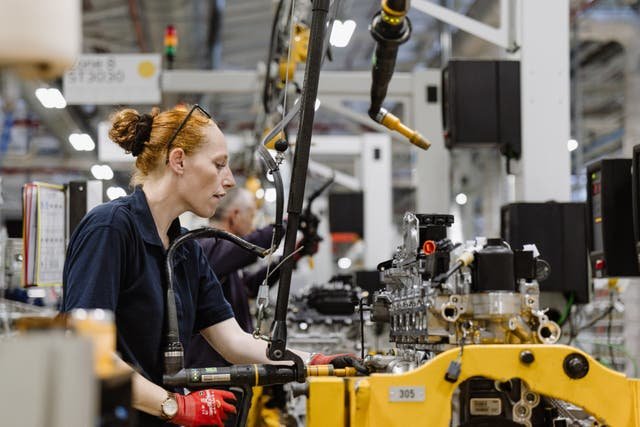At 1,106 feet long and over 100,000 long tons, the U.S. aircraft carrier USS Gerald R. Ford (CVN-78) is the most advanced in the world and serves as both a warship and a mobile air base. Packed with defensive weapon systems and a variety of offensive, defensive, and surveillance aircraft, it’s an incredible asset to the strength of the American military. However, China’s been spending big money to boost its military forces as well, and its new aircraft carriers have one crucial advantage. While they don’t have the experience of American carriers in terms of combat operations at sea, launch and recovery efficiency, or battle-tested crew, they are part of a larger infrastructure that gives China an advantage over even the most powerful U.S. carrier.
This isn’t an apples-to-apples comparison, because the real advantage doesn’t come from the carriers themselves; they get help from China’s People’s Liberation Army (PLA) Rocket Force. This system gives China the ability to launch massive missile salvos from land, due to its large network of land-based ballistic, cruise, and hypersonic missiles like the DF-21D, DF-26, and DF-17 that can strike warships at sea. Satellites, radars, and reconnaissance drones are linked together to make up a “kill chain” that helps China detect, track, and target enemy ships, forcing opposing vessels to keep their distance from the mainland or face the constant pressure of incoming attacks.
Read more: 10 Of The Largest Navies In The World, Ranked By Self-Reported Total Naval Assets
The kill chain, magazine limits, and cost

Two U.S. carriers and a destroyer sailing in formation – U.S. Navy/Wikimedia Commons
China’s salvo mass describes the overwhelming bombardment of missiles that can challenge America’s defenses long before the carrier fight begins. It depends on three key pillars: integration (kill chain), U.S. limits (magazine stock), and cost imbalance, but before anything, the missiles must be connected to their sensors. These sensors let China detect all approaching ships early and give Commanders the ability to string missile launches together to apply pressure gradually, ultimately shifting the balance of power on the battlefield early. China’s kill chain includes over-the-horizon radars, satellites, drones, and ground stations, a network that enables China to coordinate multiple missile types, so they attack in steady waves that would force U.S. warships on the defensive almost immediately. Warships like destroyers carry a multitude of weapons but have limited magazine capacity.
Despite having a Vertical Launch System (VLS) with cells that hold a mix of weapons comprised of interceptors (for defense), offensive missiles (for attack), and others, under a saturation attack, a ship could simply run out of interceptors trying to stop the onslaught of incoming missiles. The final factor is cost; a single U.S. interceptor costs about $4.3 million, whereas China could fire a large volume of relatively cheaper missiles, forcing the U.S. to spend a massive amount of money just on defense. No matter the military power comparison between the two countries, this difference in costs favors China and theoretically dictates how many U.S. ships can safely operate in the country’s immediate vicinity.
What this means for America and the world

Warship launching missile at sea – Japan Maritime Self-Defense Force/Wikimedia Commons
China’s missile ecosystem forces the U.S. and other naval forces to adapt. One major shift is toward Distributed Maritime Operations (DMO). DMO is a U.S. operational concept to avoid becoming sitting ducks. Naval forces spread sensors and ships over larger areas instead of being tightly grouped together, reducing the chance of being wiped out by concentrated missile salvos. Investing in less vulnerable, stealthier, deep-magazine assets could make a huge difference. For example, Virginia-class attack submarines, ranked as America’s top three deadliest submarines, can be fitted with the Virginia Payload Module, which dramatically increases their firepower and mission flexibility.
China’s long-range missiles, like its DF-26, can reach around 2,485 miles, so developing weapons and ships that can strike from farther away would let distance serve as a defense and could change the balance of power. China’s missile network is a force to be reckoned with if the fight were to start on its doorstep. It forces the U.S. and other countries to change how they use their naval ships, matching China’s barrage with long-range, stealthy warfare. But for now, salvo mass capabilities remain the key edge China holds over American aircraft carriers.
Want the latest in tech and auto trends? Subscribe to our free newsletter for the latest headlines, expert guides, and how-to tips, one email at a time. You can also add us as a preferred search source on Google.
Read the original article on SlashGear.





